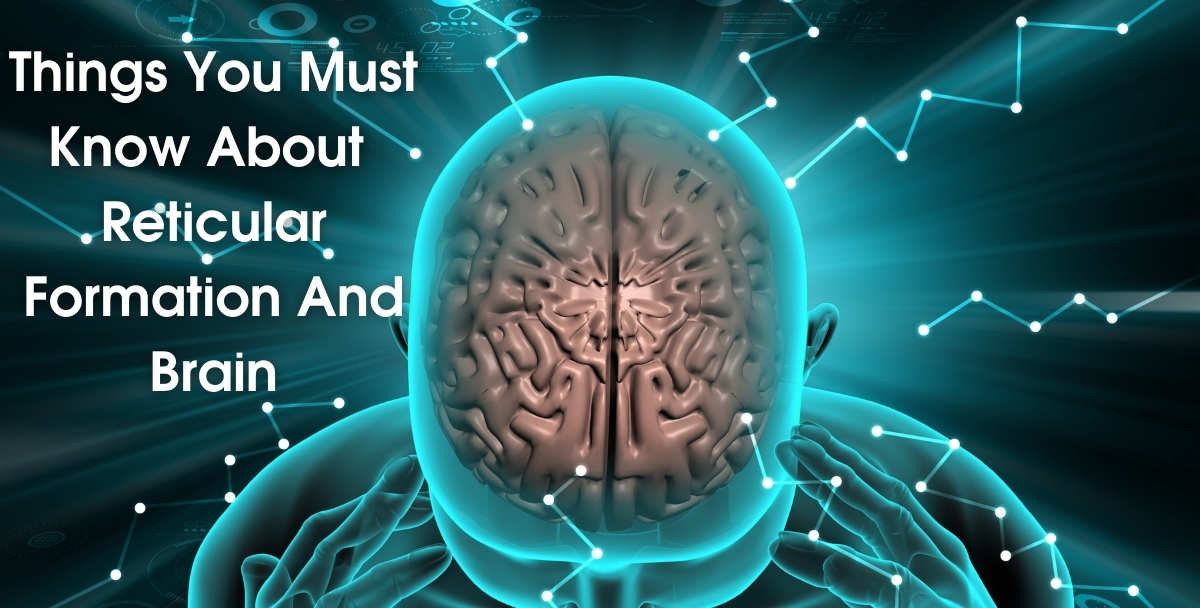
How our brains function is nothing short of a pure anatomical mystery. The human brain is the only part that still remains active even when you are asleep and all your organs are at rest.
Reticular formation, the term, which has its origin from the Latin word reticulum means net. It refers to a series of neurons that passes through the spinal cord to the thalamus within the brain stem. Our central nervous system is centred around reticular formation as it forms part and parcel of our brains and mental activities.
Reticular formation is responsible for most of the human’s behavioural patterns starting from motor, sensory, cognitive, and mood-related perception. It controls physiological functions like sleep-wake cycle and epilepsies.
The Meaning And Functions
In its simple terminology, Reticular formation is, actually, a complex network of tiny neurons and brain nerves within the human nervous system located around the brainstem. It starts from the length of the brainstem through medulla oblongata and moves all along the way to the human spinal cord. There are brainstem nuclei with embedded cytoarchitectural boundaries like RPC (red nucleus).
Reticular Formation: Importance And Key Functions
- i) It produces key Neurotransmitters that are signaled through the central nervous system in order for our minds to control motor activity, behaviours, and sensory perception.
- ii) The Ventral tegmental area, which falls within the sphere of the reticular formation, is responsible for producing dopamine and noradrenergic neurons — both are helpful in identifying human stress response. It also regulates our sleep and blood pressure. Dopamine becomes excessively crucial to maintaining the level of motivation and understanding the pleasures of life.
iii) The Raphe nuclei, which is the storehouse of serotonin release, is located in the reticular formation. Serotonin is one of those hormones that modulates our mood, sense of well-being and feeling of joy. The hormone also helps in stimulating our digestive system and sleeping patterns.
- iv) It encompasses the pedunculopontine nucleus and laterodorsal tegmental nucleus that are key to producing acetylcholine in the brain. The hormone, overall, controls various behavioural responses while regulating sensory perceptions like see, hear, feel, touch and taste. It also controls various activities undertaken by neurons in the cranial nerve nuclei including maintenance of our gastrointestinal system and respiratory mechanism.
- v) Reticular formation also facilitates free movement of lips, tongues and teeth while eating and chewing. Also, it allows for making facial expressions like weeping, laughing, or making eye contacts.
- vi) A number of neuron fibers that are found in the reticulospinal tract within the reticular formation help in maintaining our gesture and posture.
The Nervous Systems of Early Mammals and Their Evolution
The evolution of the nervous system makes for an interesting read. According to various scientific researches, the human brain saw a massive transformation in its size in a stage-by-stage process.
In Homo habilis, the first known humans of this planet, the size of the brain was recorded at just 600 cm3. The size of the brain grew around three times — up to 1730 cm3 — in Homo Neanderthals. The increase in the size of human brains represented the better capacity of these individuals to perceive the intelligence and thought process. This can be better understood with the use of more sophisticated tools and weapons in the later stages of mankind’s evolution.
The reticular formation is bordered by the tectum gray matter and dorsal thalamus while accommodating a range of large and small cells to create a dendritic web of neurons. Cuneiform and parabrachial become paramount to studying the evolution of mammals and their nervous system. However, any attempt at a detailed study with conclusive inferences regarding brains in mammals is impossible because their cranial structure and sensory perception vary from one mammal to another.
Structure, Function, and Development of the Nervous System
Reticular formation stretches within the brainstem and connects the medulla to the midbrain. It controls various functions including arousal and consciousness apart from regulating visceral functions. A slight loss of neural activity within the brainstem can lead to loss of consciousness and coma.
The cerebral cortex is dependent upon the brainstem to keep a person aware and awake. It also modulates respiration, blood pressure and cardiovascular functions apart from other oromotor functions like swallowing and chewing. Our complex reflexive movements in walking, jumping, or even standing in the upright pose are all a result of minute movement of various neurons within the reticular formation in the brainstem.
Reticular Activating System
In simple terms, the reticular activating system conveys impulses throughout the intralaminar nuclei and cerebral cortex. It sharpens human consciousness and sensory feels including pain, temperature, and touch.
In the late 1950s, almost seven decades back, a series of experiments on animals’ brains came out with an interesting conclusion. It was found that the reticular activating system functioning around the midbrain controls our wakefulness while it regulates our sleeping pattern in the medulla.
Topographical Classification
The nuclei forming the part and parcel of reticular formation are scattered all across the brainstem. These nuclei are further divided into three types, topographically, as follows; Lateral Group of Nuclei, Medial Group of Nuclei, and Median Group of Nuclei.
Lateral Group of Nuclei
This group of nuclei is located around the brainstem’s lateral region, connecting one end of the inferior colliculus to the spinal cord. These nuclei are further subdivided into three types of cell groups; noradrenergic cells (A1-A7), cholinergic cells (Ch5-Ch6), and adrenergic cells (C1-C2). These nuclei heavily concentrate on managing cardiopulmonary activities inside our bodies.
Medial Group of Nuclei
This group of nuclein includes large and medium neurons, but medium neurons comparatively outnumber the larger neurons in the region. It is further categorized into nucleus reticular ventralis, which is again further subdivided into pars alpha and ventral gigantocellular nuclei.
Median Group of Nuclei
These nuclei travel across the midbrain to the spinal cord dividing the brainstem into two portions making it convenient for the researchers to locate the median group of nuclei. These are also called raphe nuclei, because of their heavy presence in the midline raphe region inside human brains. Raphe nuclei are further classified into nine groups with cell clusters; B1 to B9. However, B4 cells are not present in humans.
The Conclusion
Any study into human brains, functions, and reticular formation, is bound to be complex and mysterious. Human brains perform multiple functions without stopping for even a nanosecond. We face bouts of blackout and unconsciousness for a few seconds or less when our brains cease to function, though temporarily.
The reticular formation comprises tiny neurons and nuclei, which traverse all the way from the brainstem to the spinal cord and vice versa round-the-clock. Any disturbances within the reticular formation mean a person may experience a blackout, unconsciousness, and unable to feel sensory perception. Being the main organ, it functions to its full capacity that helps us in maintaining our biological clock and performing other activities.



